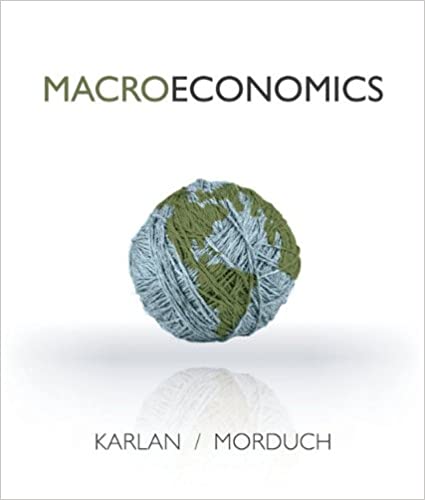
Macroeconomics 1st Edition by Dean Karlan,Jonathan Morduch
Edition 1ISBN: 978-0077332648
Macroeconomics 1st Edition by Dean Karlan,Jonathan Morduch
Edition 1ISBN: 978-0077332648 Exercise 1
Suppose you have two job offers and are considering the trade-offs between them. Job A pays $45,000 per year and includes health insurance and two weeks of paid vacation. Job B pays $30,000 per year and includes four weeks of paid vacation but no health insurance.
a. List the benefits of Job A and the benefits of Job B.
b. List the opportunity cost of Job A and the opportunity cost of Job B.
a. List the benefits of Job A and the benefits of Job B.
b. List the opportunity cost of Job A and the opportunity cost of Job B.
Explanation
Opportunity cost:
Opportunity cost refers to the value of forgone goods and services to get the other goods and services.
a.Benefits:
Benefits of job 'A' are extra payment of $15,000 per year and health insurance. Benefit of job 'B' is two weeks
per year and health insurance. Benefit of job 'B' is two weeks  of paid vacation.
of paid vacation.
b.Opportunity cost:
If the person accepts job 'A', then the person has to give up the extra paid vacation available from job 'B'. Thus, the opportunity cost of job 'A' is two weeks of paid vacation. On the other hand, if the person accepts job 'B', then the person has to give up $15,000 yearly income and health insurance. Thus, the opportunity cost of accepting job 'B' is $15,000 and health insurance.
yearly income and health insurance. Thus, the opportunity cost of accepting job 'B' is $15,000 and health insurance.
Opportunity cost refers to the value of forgone goods and services to get the other goods and services.
a.Benefits:
Benefits of job 'A' are extra payment of $15,000
 per year and health insurance. Benefit of job 'B' is two weeks
per year and health insurance. Benefit of job 'B' is two weeks  of paid vacation.
of paid vacation.b.Opportunity cost:
If the person accepts job 'A', then the person has to give up the extra paid vacation available from job 'B'. Thus, the opportunity cost of job 'A' is two weeks of paid vacation. On the other hand, if the person accepts job 'B', then the person has to give up $15,000
 yearly income and health insurance. Thus, the opportunity cost of accepting job 'B' is $15,000 and health insurance.
yearly income and health insurance. Thus, the opportunity cost of accepting job 'B' is $15,000 and health insurance.Macroeconomics 1st Edition by Dean Karlan,Jonathan Morduch
Why don’t you like this exercise?
Other Minimum 8 character and maximum 255 character
Character 255


